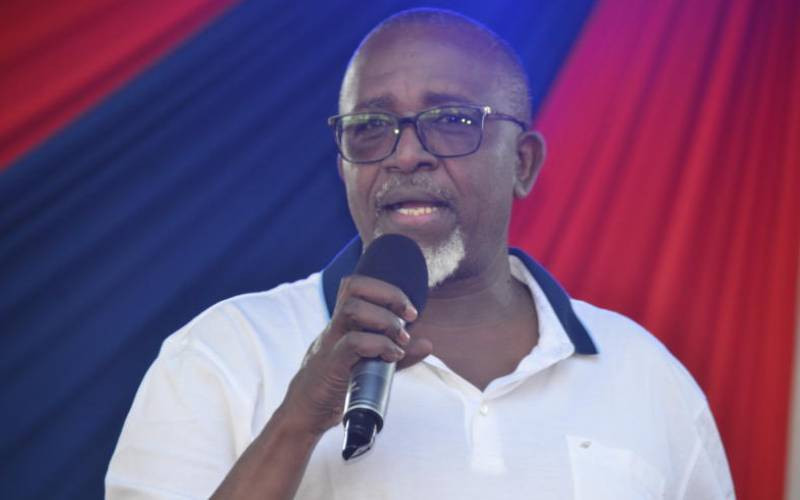Ghana's flooding crisis: An engineer's perspective
The writer, Muhammad Ukasha, is a PhD candidate in Advanced Building Technologies at the University of Massachusetts Amherst.
Flooding is a persistent issue in both rural and urban areas. Historical records indicate that flooding in Ghana can be traced back to the 1930s, with significant events occurring between 1955 and 2023.
Over the past 20 years, floods have claimed an estimated 400 lives, displaced around 4 million people, and resulted in economic losses of US$1.7 billion.
One of the most recent tragedies that both Ghanaians and the world remember is the 3 June 2015 fire-flood disaster. At least 25 people died directly from the flooding, while an explosion at a petrol station, triggered by the flood, killed at least 200 more, many of whom were seeking shelter from the storm and rising waters.
Additionally, around 150 people suffered various degrees of burns. This flooding incident affected approximately 53,000 people in the city and caused an estimated $100 million in damages.
Given that flooding is a recurring event across both rural and urban areas, what then is the root cause? Over the years, flooding in Ghana has been attributed to various factors, including climate change and infrastructure issues. Is that the full story?
After years of studying various reports and continuously learning in my academic pursuit of engineering, as a PhD student, I argue that Ghana's flooding is largely man-made. It has less to do with climate change and more to do with infrastructure and social behaviour. I present these arguments below:
I have identified three main engineering-related reasons for Ghana's repeated floods.
Rainfall intensity in Accra has significantly increased, with projections indicating extreme precipitation events of up to 231 mm in a single day every 100 years, and over 84 mm every 2 years, contributing to frequent urban flooding.
This is perhaps the most direct assault on natural hydrological systems in waterways. Uncontrolled and often unlawful construction is increasingly taking over natural areas meant for water, such as riverbeds, floodplains, and wetlands.
These spaces are naturally designed to move large amounts of water or hold it temporarily during heavy rains. When buildings are put in these crucial areas, they block the natural flow and storage of water, leading to more severe and faster flooding in nearby communities.
This directly results in submerged homes, damaged essential services, and a greater risk to people's safety.

Ghana's existing drainage infrastructure is often inadequate to carry stormwater, with existing drains often undersized, unconnected, or improperly channelled. Many drains are undersized, lacking the capacity to handle the volume of runoff generated by increasingly intense rainfall events and rapid urbanisation. Even when drainage systems exist, they often have design flaws.
For example, they may not be steep enough (insufficient gradients), which prevents water from flowing efficiently and causes it to stand still and get blocked. Furthermore, a widespread lack of maintenance makes things much worse.
Drains are frequently clogged with silt, plastic waste, and household rubbish. This means that even properly designed systems become useless. Instead of carrying water away, these vital drainage channels turn into stagnant pools that overflow regularly, leading to predictable and damaging floods.
The uncontrolled expansion of Ghanaian cities shows a significant lack of integrated urban planning and a failure to follow any plans.
Development often happens in isolation, meaning new projects are built without thinking about how they will collectively affect water drainage.
Roads are often constructed without proper pipes for water to pass through (culverts) or without considering the natural slope of the land. Similarly, public buildings are sometimes put up in areas prone to flooding.
This disconnected way of building creates a disorganised urban landscape where natural water paths are blocked. Permeable surfaces like soil, which absorb water, are replaced by hard, impervious concrete that water cannot penetrate.
As a result, there is no overall plan for building resilient infrastructure that can handle heavy rainfall. Even government projects sometimes fail to connect with existing city plans, exacerbating the problem.
The Ghanaian population plays a significant role in exacerbating flooding issues across the country. A prevalent practice among Ghanaians is the disposal of waste into drainage systems, particularly during the rainy season.
Many individuals operate under the misguided belief that rainfall will carry this refuse away, unaware that such actions lead to the blockage of drains and exacerbate flooding conditions.
This alarming situation highlights the urgent need for stricter enforcement of waste management laws and public awareness campaigns that educate communities about the importance of proper waste disposal.
Additionally, another critical factor contributing to flooding in urban areas is the rampant construction of buildings and infrastructure on natural waterways.
This encroachment disrupts the natural flow of water, causing significant waterlogging when heavy rains occur. This social issue is particularly pressing in densely populated cities like Accra, where rapid urbanisation often leads to insufficient planning and oversight.
Addressing this problem requires a fundamental shift in societal attitudes and practices, as well as coordinated efforts from both government and community stakeholders. Progressive urban planning, along with public education initiatives, will be essential to mitigate these flood risks and protect both the environment and the communities affected.
Addressing Ghana’s flood crisis requires an approach rooted in sound engineering principles and informed by global best practices.
We must learn from nations that have successfully managed flood risks. Countries like the Netherlands, with its Room for the River initiative, where instead of relying on increasingly tall and strong dikes to hold back rising river waters, the Netherlands decided to give rivers more space to expand and flow naturally, especially during periods of heavy rainfalls.
This proactive approach works with nature rather than fighting against it, as recorded in the World Economic Forum Global Risks Report 2024.
China's "sponge city" concept, a departure from conventional urban design, leverages nature-based interventions, such as permeable surfaces, restored wetlands, and strategically designed waterways, to facilitate rainwater absorption and storage, thereby mitigating flood risks.
This approach, inspired by natural hydrological processes, stands in contrast to traditional urban systems that primarily rely on impervious surfaces and rapid drainage to channel water away.
We must also learn from developed nations in North America, like the USA and Canada, which employ Integrated Flood Management (IFM).
This holistic approach combines structural measures like dikes and retention ponds with non-structural measures like early warning systems, land-use zoning, sustainable urban drainage systems (SuDS) like green roofs and permeable pavements.
Resilient infrastructure, comprehensive planning, and community engagement are hallmarks of these successful strategies.

To effectively address Ghana’s chronic drainage challenges and flood vulnerability, I propose a multi-pronged engineering strategy grounded in infrastructure development and institutional reform. First, we must prioritise expanding and upgrading stormwater drainage systems, particularly in high-density and flood-prone zones such as the Odaw-Korle-Chemu catchment in Accra, which serves over half of the city’s population.
This includes constructing larger, properly connected, climate-resilient drains capable of handling projected rainfall intensities of up to 230 mm daily.
Past failures such as the Korle Lagoon Ecological Restoration Project (KLERP) and the Odaw Drainage Improvement Works under the Urban Environmental Sanitation Project (UESP) highlight the need for robust stakeholder engagement, adequate funding, and political commitment. These projects stalled due to financial constraints and community resistance, underscoring the importance of participatory planning and transparent governance.
Again, I recommend implementing a city-wide stormwater management master plan that integrates rainwater harvesting, routine maintenance schedules, and solid waste control to prevent drain blockages. Enforcement of zoning laws must be strengthened to prevent construction in waterways and floodplains.
Lastly, we need a coordinated catchment management framework on drainage, especially for unmanaged basins like Kpeshie and Songo-Mokwe, supported by real-time monitoring systems and adaptive planning to respond to urban growth and climate variability.
A robust legal and enforcement framework is essential. This includes strictly enforcing existing building codes and zoning regulations to prevent new construction in flood-prone areas.
For existing structures on waterways, a phased approach involving legal designation, public engagement, and, where necessary, demolition with fair compensation and resettlement plans must be implemented.
Reclaiming and restoring natural floodplains and drainage channels is a crucial and effective way to reduce flood risks. These areas in Accra are known to be prone to flooding, including Kaneshie, Old Fadama, Adabraka, and areas near the Korle Lagoon.
Flood control, for example in the capital Accra, involves multiple institutions, including the Accra Metropolitan Assembly (AMA), Environmental Protection Agency (EPA), and the Hydrological Services Department, yet there is no unified or standardised system guiding drainage design, land use planning, or enforcement of development controls.
A critical deficiency in Ghana’s infrastructure development is the absence of a nationally adopted and enforced engineering standard. Unlike developed countries that operate under comprehensive design codes such as the British Standards (BS), American Society for Testing and Materials (ASTM), or Eurocodes, Ghana continues to rely on outdated British Standards without contextual adaptation or periodic review.
This is problematic, considering the distinct climatic, geological, and hydrological conditions between Ghana and the UK.
Structural engineers in Ghana still use BS codes as the primary design reference, and engineering education continues to train students using these obsolete frameworks, which compromises the relevance and resilience of infrastructure systems.
Globally, the International Organisation for Standardisation (ISO) provides recognised standards such as ISO 9001 for quality management and ISO 14001 for environmental management, which are essential for ensuring consistency, safety, and sustainability in engineering practice. Ghana’s lack of a comprehensive national standard code, especially for drainage, urban planning, and material specifications, has resulted in fragmented responsibilities, overlapping mandates, and inconsistent implementation of flood mitigation measures.
The failure of major flood control projects like the Korle Lagoon Ecological Restoration Project (KLERP) and the Odaw Drainage Improvement Works was not solely due to financial and political constraints, but also due to the absence of a coherent regulatory framework to coordinate stakeholders and enforce technical compliance.
To rectify this, I recommend the establishment of a Ghanaian National Standard Code for infrastructure design and maintenance, initially modelled on proven frameworks such as BS or ASTM, but rigorously adapted to Ghana’s environmental realities.
This code must be backed by legislation and enforced through a centralised authority with jurisdiction over urban planning, stormwater infrastructure, and environmental safeguards. Standardisation will ensure consistency in design, implementation accountability, and infrastructure performance resilience, particularly in flood-prone urban zones.
Ghana’s flooding cannot be attributed to a single cause; it is a multi-dimensional issue. To effectively address it, we need a combination of engineering solutions and social reorientation.
We must take the necessary measures now, without any political influence, because further delay will result in more loss of lives and property.
By prioritising immediate and comprehensive action, we can protect our communities and reduce the risk of future flooding events.
The writer, Mohammed Ukasha Tiibu is a PhD candidate in Advanced Building Technologies at the University of Massachusetts Amherst, USA.
The Views, Comments, Opinions, Contributions and Statements made by Readers and Contributors on this platform do not necessarily represent the views or policy of Multimedia Group Limited.
Tags:
The Views, Comments, Opinions, Contributions and Statements made by Readers and Contributors on this platform do not necessarily represent the views or policy of Multimedia Group Limited.












